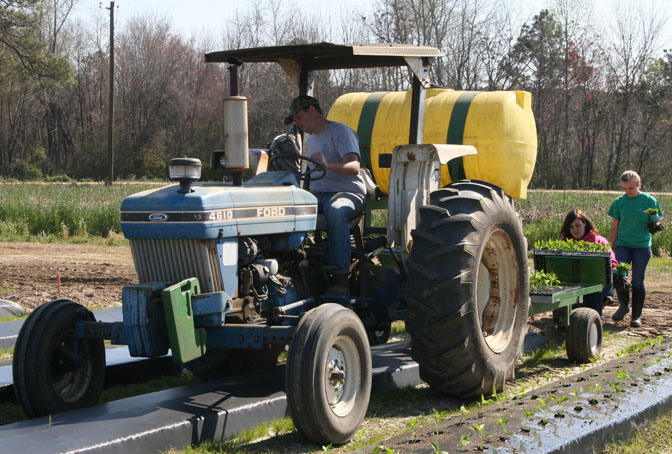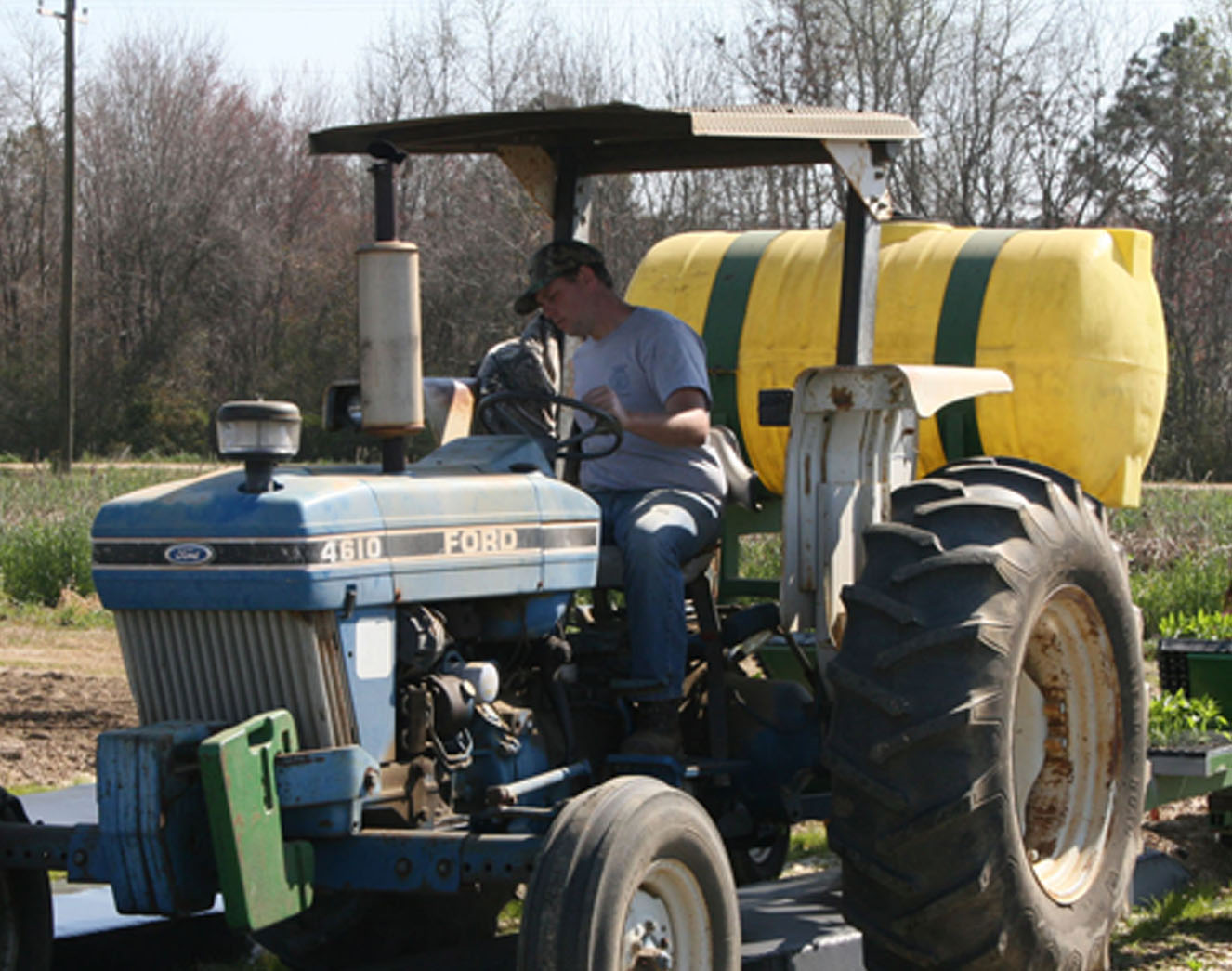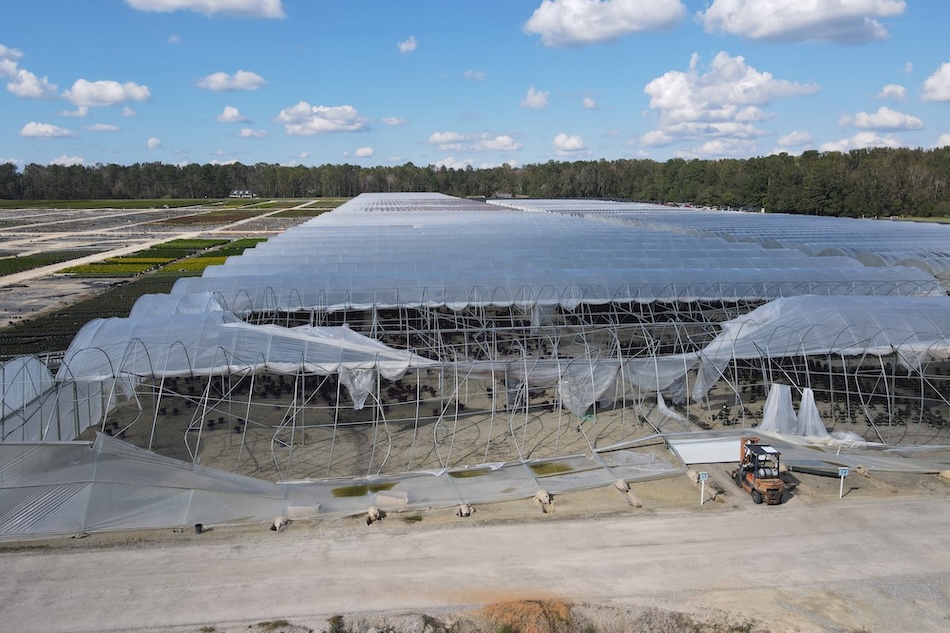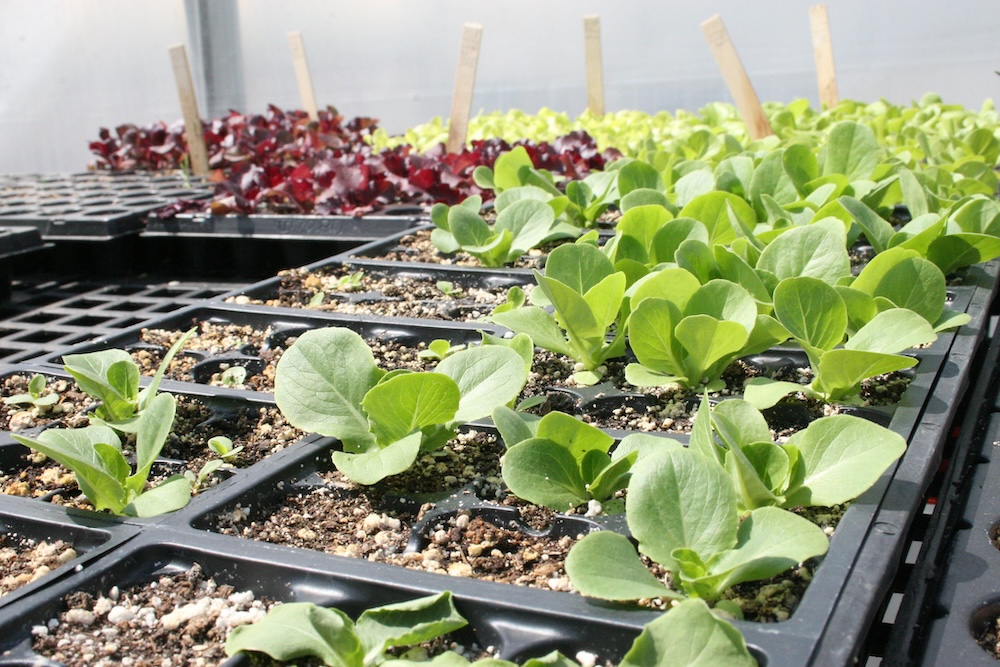Complaints over off-target movement of chemical applications went down 48 percent from 2014 to 2015, but Georgia farmers must better understand the factors that influence drift, according to University of Georgia weed scientist Stanley Culpepper.
Culpepper, a world-renowned researcher based on the UGA campus in Tifton, Georgia, attributes the reduction in pesticide drift complaints to slower wind speeds combined with an educational initiative by UGA Cooperative Extension and the Georgia Department of Agriculture.
Culpepper and UGA Extension agents across the state began classes to teach farmers how to reduce pesticide drift in late 2014. They are continuing this educational campaign this winter.
“We need to further reduce drift complaints by 48 percent two or three more times. As an organization, we are truly committed to helping growers make on-target applications to protect themselves, their neighbors and our environment,” Culpepper said.
Keeping herbicides from moving off target and onto neighboring fields, gardens or other sensitive plants has been a growing concern since the end of 2014. Culpepper says that, to effectively manage off-target pesticide movement, up to 15 factors need to be considered, including wind speed, spray pressure, spray speed, height of the boom above the target, terrain and the herbicide product and formulation used.
The most important element, though, is the person making the herbicide application, Culpepper said.
“Arguably, the most important factor in reducing off-target herbicide issues is an understanding of the sensitivity of the crops or plants that surround the applicator when the application is being made. If you apply a product and the plants in close proximity are extremely sensitive, then you’re much more vulnerable to a problem,” Culpepper said.
Georgia is known for its diverse agricultural production. Not one crop dominates the agricultural landscape. Row crops such as cotton, corn and peanuts are high value commodities, as are vegetables like watermelon, tomatoes and bell peppers. This diversity forces farmers to be more aware of their surroundings when applying herbicides.
“You can go to a crossroads, and it is not uncommon to see cotton, watermelons, snap beans, peanuts and many other crops all across the road from one another. We live in a state that is extremely diverse in its cropping structure, which makes us strong. It is also one of the areas that makes us vulnerable for off-target pesticide movement. We have to make intelligent decisions and these decisions should be based on both sound research and experience,” Culpepper said.
While UGA’s ramped-up educational initiative played a role in reduced drift complaints, so did environmental conditions. Two years ago, higher-than-optimal wind speeds created problems; this was not the case for the past year, according to Culpepper. The result was more on-target applications during 2015.
With the unpredictability of the weather this spring and summer, farmers can’t bank on optimal spraying conditions. However, they can count on making wise decisions based on sound science.
Culpepper hopes to see the number of off-target herbicide movement issues continue to decrease, but he says UGA Extension will not be discouraged if they increase.
“We will just continue to work even harder to share important, science-based information designed to help growers improve on-target precision applications,” he said. “I think what last year’s data says is that growers are making better decisions — whether it’s the educational approach or the environment or, more likely, both. We need to keep moving forward with innovative and creative ways to improve pest management through economically sustainable programs for all of our crops, while reducing issues.”
Statewide meetings are set for Feb. 22 through March 1 of this year to continue sharing research-based pesticide application information with growers. Some 1,061 growers were trained last year.
“I could not be more excited about the partnerships with the Georgia Department of Agriculture in presenting these trainings. This shows the capacity of UGA Extension to respond quickly to critical issues that affect our growers as well as the public,” said Associate Dean for UGA Extension Laura Perry Johnson. “I commend Stanley Culpepper and Tommy Gray (Georgia Department of Agriculture) for leading this effort, and I am so proud of our agents and their ability to deliver this information.”
The subject matter is not new to Georgia farmers, but growers can immediately put to use new research — conducted over the past few years by academics and the industry — to help improve on-target pesticide applications.
The key to staying on target with pesticide applications is to be preventative, not reactive, Culpepper said.
“For those who may not be fully knowledgeable about agriculture, I think it is also important to understand that not a single person on earth who’s applying a pesticide wants it to move off target,” he said. “When we have new approaches or methods based on science that will help growers achieve their goal of on-target pesticide applications, then we have a duty to share that information in formats that are understandable and adoptable.”
For information about meetings in your area, call your local UGA Extension office.



.jpg)




